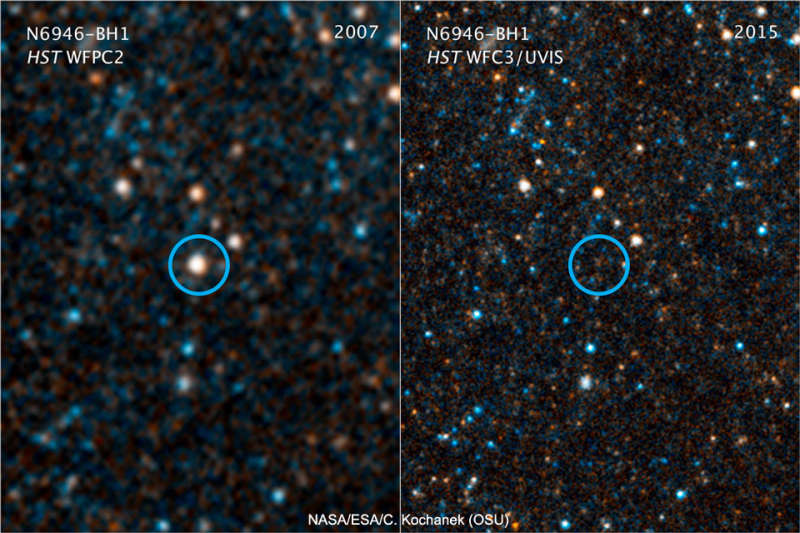The Case of the Missing Star

Explanation:
What's happened to giant star N6946-BH1?
It was there just a few years ago --
Hubble imaged it.
Now there's only a faint glow.
What's
curiouser,
no bright
supernova
occurred -- although the star did brightened significantly for a few months.
The leading theory
is that, at about 25 times the mass of our Sun,
N6946-BH1's great gravity held
much of
the
star
together during its final tumultuous death throes, after which most the
star sunk into a
black hole of its
own making.
If so,
then
what remained
outside of the black hole likely then formed an
accretion disk that emits comparatively faint
infrared light
as it swirls around, before falling in.
If this mode of star death is confirmed with other stars,
it gives direct evidence that a
very massive star
can end its life with a
whimper rather than a bang.
Open Science:
Browse 1,400+ codes in the Astrophysics Source Code Library
Authors & editors:
Robert Nemiroff
(MTU) &
Jerry Bonnell
(USRA)
NASA Web Site Statements, Warnings,
and Disclaimers
NASA Official: Jay Norris.
Specific
rights apply.
A service of:
LHEA at
NASA /
GSFC
& Michigan Tech. U.

